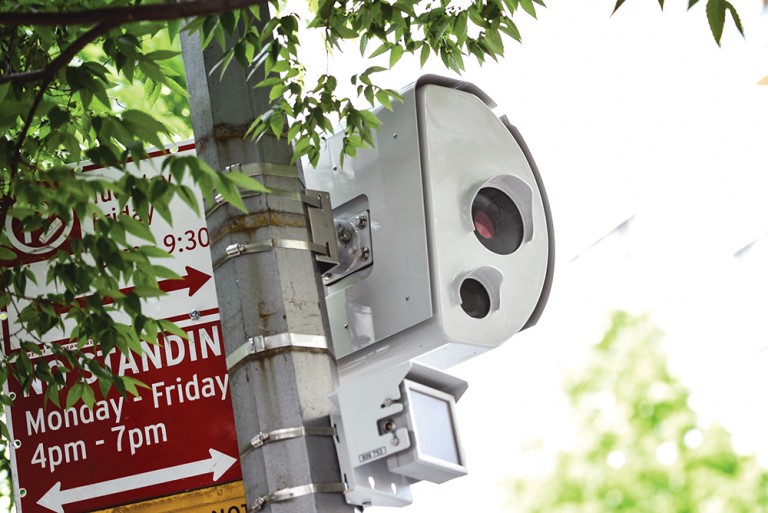By Forum Staff
Mayor Eric Adams and City Transportation Commissioner Ydanis Rodriguez on Monday announced that DOT has identified a vendor to continue managing the City’s automated enforcement camera programs, including its red-light cameras, speed cameras, and bus lane enforcement cameras citywide, as well as cameras used to enforce weight limits on the Brooklyn-Queens Expressway.
Verra Mobility was identified to manage the programs — the largest network of its kind in the nation — and DOT will now enter into contract negotiations with the company. DOT’s automated enforcement programs have proven highly effective at changing driver behavior and making streets safer, according to administration officials. The selection stems from a request for proposals issued last summer and is expected to include a five-year contract.
All of the Big Apple’s automated enforcement camera programs require State authorization and include caps on the number of locations where cameras can be sited. This previously included a stringent cap on the number of locations where red-light cameras could be installed — just 150 signalized intersections, or less than 1 percent of the intersections across the five boroughs. Last year, the Adams administration successfully advocated for the expansion of red-light cameras to additional locations, and Gov. Kathy Hochul signed a bill into law renewing and expanding the City’s red-light camera program to 600 signalized intersections. The City plans to begin its red-light camera program expansion this year.
DOT’s automated enforcement programs are designed and closely monitored by agency staff, covering thousands of cameras and sensors that help to enforce New York state laws against drivers who, among other violations, exceed speed limits and drive in or obstruct bus lanes. In 2023, Gotham also became the first city in the nation to use automated enforcement sensors against overweight trucks on the BQE.
The RFP issued last summer, sought applicants with a deep understanding of automated traffic enforcement and had the expertise, experience, and financial strength necessary to improve the City’s programs. The RFP also sought applicants that could sustain a five-year contract. After an in-depth evaluation of all applicants’ technical proposals, field product demonstrations, and oral presentations to an evaluation committee and technical advisors, DOT identified Verra Mobility as both having the capacity to operate large-scale camera systems and the technical capabilities to expand to newer equipment. As part of the RFP, the city had specifically asked companies to leverage recent innovations in camera-based technology to tackle new challenges, including the growth in obscured license plates used on ghost cars. DOT expects the selected firm to upgrade the current Automated Traffic Enforcement systems while maintaining public safety and program performance. Among the other standout features of the company’s proposal were a commitment to 32 percent minority- and women-owned business enterprise utilization and a commitment to community partnerships and education.
“Expanding automated enforcement cameras in New York City are a necessary step toward making our streets safer for all New Yorkers, and since the passage of this law, we’ve increased the use of these technologies — reducing dangerous driving behaviors and crashes, and ultimately saving lives,” said Adams.

